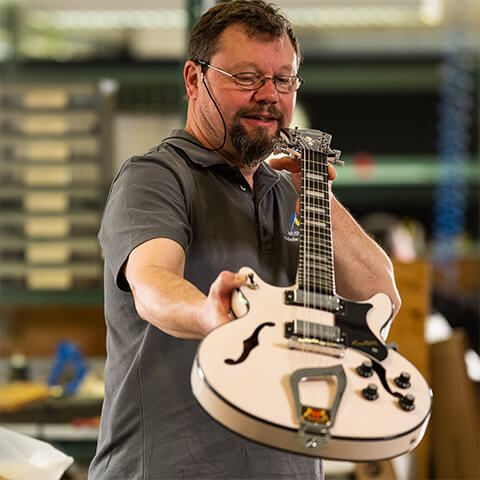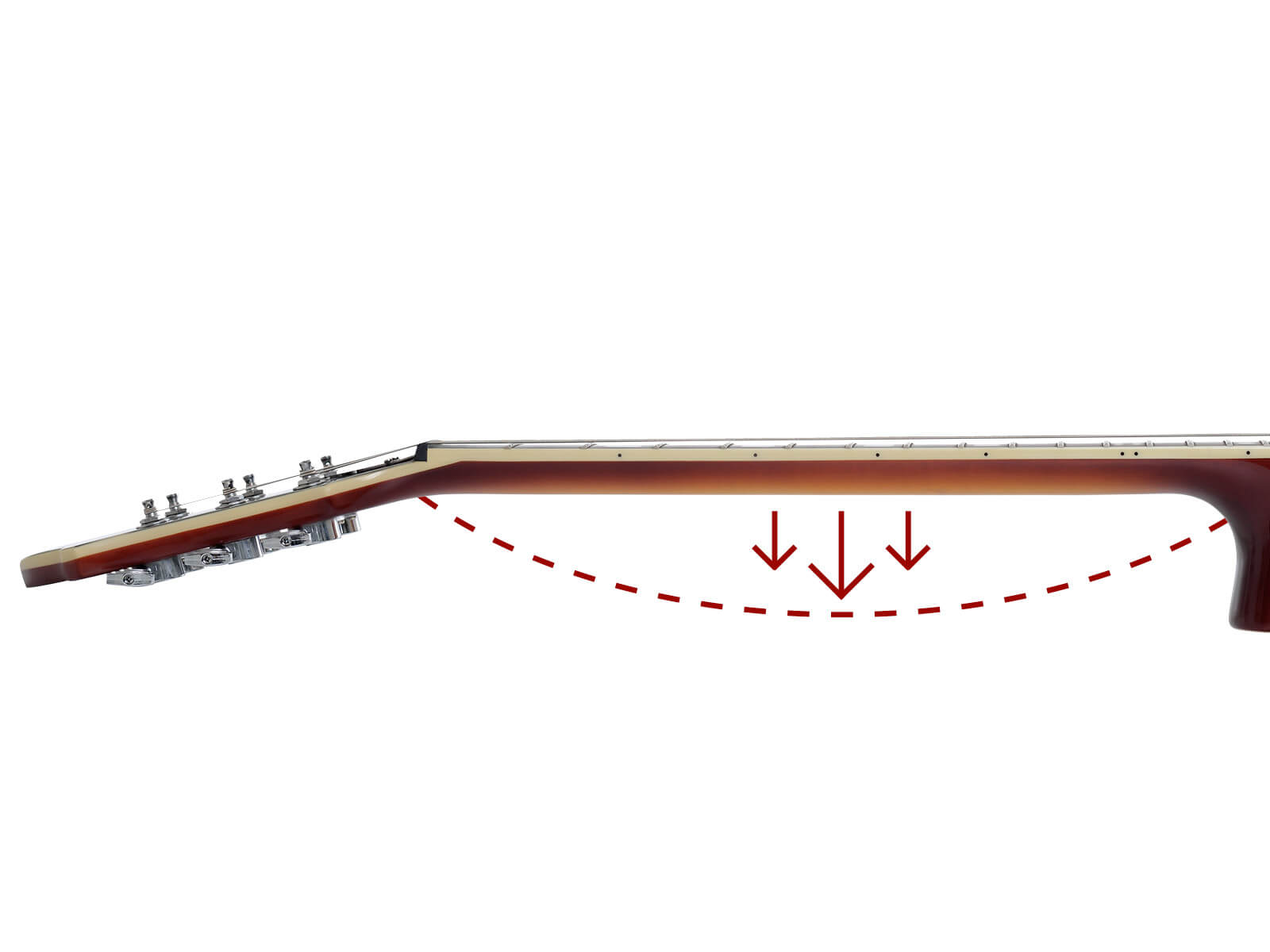

The neck on your Hagstrom guitar is reinforced with our H-Expander metal truss rod. The design of the truss rod prevents twisting of the neck, and allows the neck to the be adjusted if there is uncomfortable playability between the 5-9th fret area, or even fret buzz in extreme conditions. We have incorporated this special H-Expander truss rod into your guitars for a number or reasons:
To determine if the neck on your truss rod is out of alignment, follow this procedure:
With your left hand, depress the low E-string between the nut and the first fret. With your right hand, hold the same string against the fingerboard at the 12th fret.
There should be a minimum clearance (at least 0.005” (metric: 0.127mm)) between the bottom of the string and the top of the 5th fret. If the string clearance is more than 0.03” (Metric: 0.762mm) this would mean that your neck is “bowed” and could need to be adjusted.
To correct neck back bow (requiring less tension on the neck, to relieve any back-bow on the neck), you first need to remove the truss rod cover plate on the headstock, and turn the truss rod nut (using a metric AllenKey and depending on the year your guitar was made, either 3mm or 4mm in size) towards the right side of the headstock. Each movement of the Allen nut should be made using small increments of about 1/12 of a full turn and by placing slight pressure on the neck each time an adjustment is made to help set the neck into its new position.
If either of the E-strings touch the 5th fret (when placing one finger in the first fret, and the other onthe 12th fret), the neck still has a back bow which causes the frets to buzz when played at the first few frets. For a perfect setup, the string should barely touch the 5th and 6th frets (when placing one finger on the 1st fret and the other on the 12th fret).

To determine if the neck has too much of a bow (too much relief), follow the same procedure outlined above, however by making adjustments to the truss rod towards the left side of the headstock using the Allan Key, to place more tension on the truss rod to achieve the proper relief. Once either of the the E-strings barely touches the 5th to 6th fret (again, by placing one finger on the string of the 1st fret and another finger on the 12th fret), the neck will then have the correct relief in the neck and truss rod.